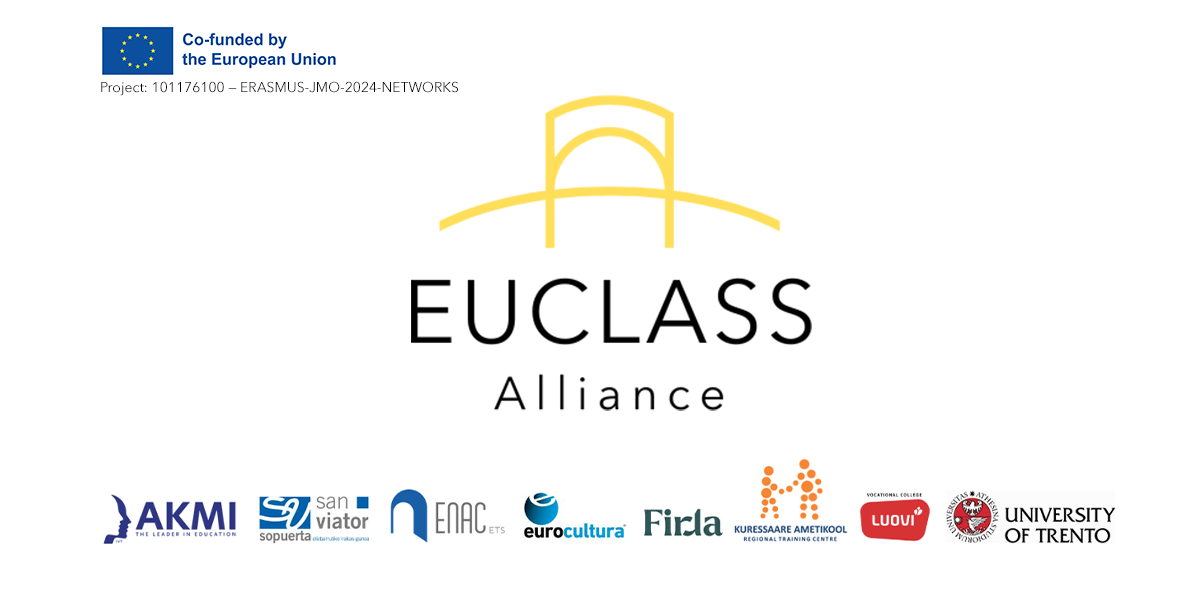About Course
Welcome to EuClass Alliance course,
an e-learning path developed in the framework of the project EuClass Alliance (101176100) financed under Erasmus+ – Jean Monnet Projects 2024-Networks
The course is designed for VET teachers, with the primary goal of providing them with reliable, certified resources and in-depth knowledge on EU integration, institutions and policies. The focus is not on offering ready-made content to pass directly to students, but rather on empowering teachers with expertise. The underlying belief is that, once teachers have a solid understanding of the subject matter, they will be better equipped to adapt and deliver it effectively and confidently in their own classrooms.
In addition to the course, the EU CLASS project includes other activities, such as summer camps dedicated to developing and refining strategies for transferring content to students. There will also be a collection of best practices and lesson plans, designed to inspire teachers and support them in creating and adapting engaging activities for their own students.
Course Structure
The course is divided into two core modules (Module 1 “History of EU Integration & EU Institutions” and Module 2 “EU Policies and Actions”), each covering a specific set of subtopics presented through individual lessons. Each lesson includes a video lecture, typically lasting between 20 and 30 minutes, followed by self-paced learning using external resources. To reinforce learning, each lesson concludes with a final quiz assessing participants’ understanding. On average, each lesson is designed to engage participants for approximately 1.5 to 2 hours, including:
-
A 20–30 minute video lecture delivered by a university professor or researcher;
-
Around 1 hour of self-paced exploration through additional learning materials and teaching resources;
-
A 5–10 minute knowledge quiz.
The learning journey begins with an initial evaluation questionnaire to assess trainers’ prior knowledge of EU-related topics. After completing each lesson, participants are invited to take a short survey to reflect on what they’ve learned and evaluate their knowledge gains.
📍 For more information about the project, please visit the official website:euclass.enac.org
The European Commission’s support for the production of this online course does not constitute an endorsement of the contents, which reflect the views only of the authors, and the Commission cannot be held responsible for any use which may be made of the information contained therein
Course Content
Pre-course Assessment
-
Pre-Course Assessment

